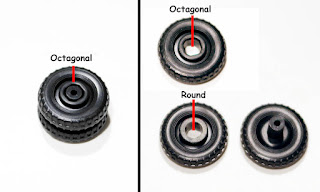 |
| 今日も一日。ご安全に! |
Shigoto Neko (仕事猫; Working Cat) is a Japanese meme that originated in 2016 from an illustration posted on twitter by the artist known as Kumamine (くまみね). In the picture, Denwa Neko (電話猫; Telephone Cat) asks "How come you're still up in the middle of the night?"
 |
| 「夜中科学電話相談」 |
Various remarks subsequently replaced the original text, and different forms of the cat emerged.
At some point, someone gave the cat a hard hat and had it pose as if performing yubisashi kakunin (指差確認). This design became known as Genba Neko (現場猫; Worksite Cat).
 |
| ヨシ! |
As the meme gained popularity in 2018, Kumamine reclaimed the character, and called it Shigoto Neko. The design was slightly changed to avoid copyright issues due to the many memetic alterations that happened with the character.
The meme has since become mainstream, with industrial associations and government offices using the character to promote workplace safety.
 |
| 2022 Agricultural Work Safety Confirmation Campaign |
Various goods, figures, and toys have been made of Shigoto Neko, but the only one of relevance to me has been the Construction Site + Shigoto Neko (工事現場+仕事猫) gashapon from Toys Cabin.
A limited black cat version was also announced last year, but such items are typically difficult to get ahold of if you happen to be overseas.
I apologize in advance for the resolution of the images. They are about ¼ the size of my typical pictures because I did some repairs on my camera, which caused all my capture parameters to be reset.
I didn't realize there was an issue until after I started editing the photos, and now I'm too lazy to retake the pictures, so they are what they are.
Set A includes various barricades, a small A-frame sign, a detour sign, a cushion drum, a portapotty, and various stickers.
Set B is largely the same as Set A, except with a large A-frame sign, and a signal light.
Set C consists of various barricades, a traffic wand, plate compactor, wheelbarrow, metal plate, some rubble, and stickers.
Set D is similar to Set C, except it includes a sign and various hand tools.
All the sets are stated to be 1/64 scale, but I think except for the portapotty and shovel, everything else would probably work for 1/72.
The cat themed metal tube (単管) barricades needs to be glued together for them to keep from falling apart.
A related set of gashapon that I picked up was the Toys Cabin Sidewalks & Signs Collection (歩道&標識コレクション).
Set A consists of sidewalk and curb parts, as well as a sign with stickers for slow/stop.
Set B also has sidewalk and curb parts, but includes a mirror instead of a sign.
Set C consists of sidewalk and curb parts, as well as a sign with stickers for no parking/no u-turn/speed limits.
Set D consists of sidewalk and curb parts, as well as a sign with stickers for no passing/no entry.
Set E consists of sidewalk and curb parts, as well as two signs with stickers for school zone/bicycle and pedestrian crossing/one way street/left turn ok.
The signs and figures (except the cat) might be a little too big for 1/72 scale, but I'd give the sidewalks a pass.
Overall, these are fairly usable items from Toys Cabin depending on your level of tolerance for scale discrepacy. I look forward to more of their future releases.















.jpg)
.jpg)




































































